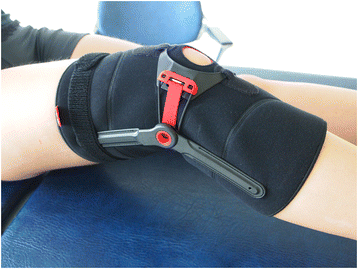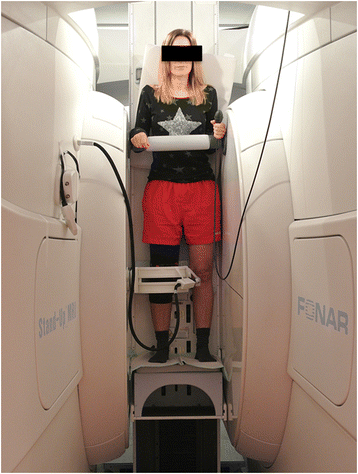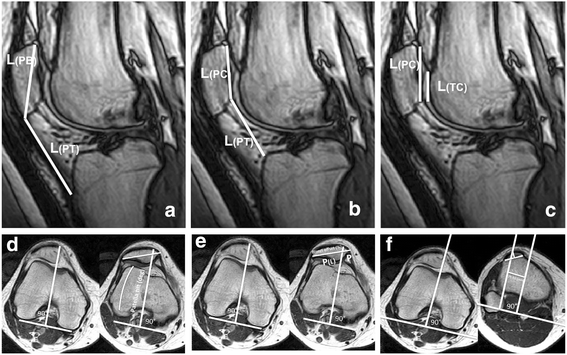The effects of a dynamic patellar realignment brace on disease determinants for patellofemoral instability in the upright weight-bearing condition
- PMID: 26282268
- PMCID: PMC4539720
- DOI: 10.1186/s13018-015-0265-x
The effects of a dynamic patellar realignment brace on disease determinants for patellofemoral instability in the upright weight-bearing condition
Abstract
Background: Patellar stabilizing braces are used to alleviate pain and prevent subluxation/dislocation by having biomechanical effects in terms of improved patellar tracking. The purpose of this study is to analyze the effects of the dynamic patellar realignment brace, Patella Pro (Otto Bock GmbH, Duderstadt, Germany), on disease determinants in subjects with patellofemoral instability using upright weight-bearing magnetic resonance imaging (MRI).
Methods: Twenty subjects (8 males and 12 females) with lateral patellofemoral instability were studied in an open-configuration magnetic resonance imaging scanner in an upright weight-bearing position at full extension (0° flexion) and 15° and 30° flexion with and without the realignment brace. Disease determinants were defined by common patellofemoral indices that included the Insall-Salvati Index, Caton-Deschamps Index, and the Patellotrochlear Index to determine patella height and patella tilt angle, bisect offset, and tuberositas tibiae-trochlear groove (TT-TG) distance to determine patellar rotation and translation with respect to the femur and the alignment of the extensor mechanism.
Results: Analyses of variance revealed a significant effect of the brace with reduction of the three patellar height ratios, patella tilt angle, and bisect offset as well as TT-TG distance. Post hoc pairwise comparisons of the corresponding conditions with and without the realignment brace revealed significantly reduced patella height ratios, patella tilt angles, and bisect offsets at full extension and 15° and 30° flexion. No significant differences between the TT-TG distances at full extension but significant reductions at 15° and 30° flexion were observed when using the realignment brace compared to no brace.
Conclusions: This study suggests that the dynamic patellar realignment brace is capable of improving disease determinants in the upright weight-bearing condition in the range of 0° to 30° flexion in patients with patellofemoral instability.
Figures





References
MeSH terms
LinkOut - more resources
Full Text Sources
Other Literature Sources
Miscellaneous

